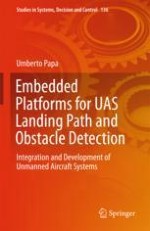This book reports on the design and development of a system that assists remote pilots during the landing procedure. In particular, it covers a previously neglected topic, namely the search for the best pathway and landing site. It describes the system’s components, such as the ultrasonic sensor, infrared sensor and optical sensor, in detail, and discusses the experimental tests carried out in both controlled laboratory and real-world environments. Providing a fascinating survey of the state of the art in the field of unmanned aircraft system electronics design and development, the book also presents recent advances in and cutting-edge methodologies for the development of acquisition systems and inexpensive sensor design for navigation data.
